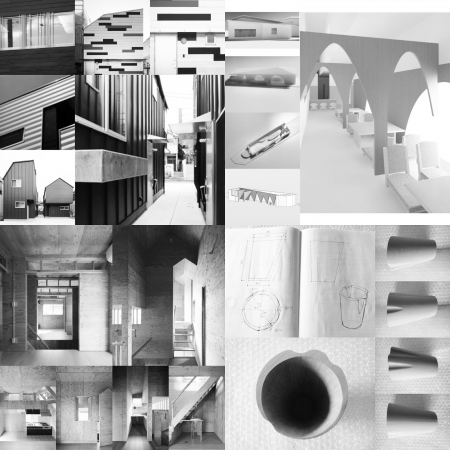建築が先
都市の形成にはざっくりした順序があり、まずは大きな通り、道や鉄道が敷かれ、さらに細分化するように道がつくられ、通りと道に囲まれた場所を公共施設用地や私有地にしていき、最終的にはそこに建築物ができる。
まず交通インフラが先に出来上がる。都市は単独では成り立たず、人流にしても、物流にしても、他の都市とのつながりが重要であり、人流や物流は人で例えたら血液であり、血液が流れるから人は生きられるように、人も物も流れないと都市は生きられない。
だから、都市の形成ではまず流れを確保する。だが、時としてその順序が逆になる。建築物が先にでき、あとから道がつくられることがある。流れるところは決まっているのだが、流れができる前に建築物ができる。
建築は道という流れが存在しなくても成り立つのだろうか、その時の建築は流れがある場合と比べて何が違うのか、などと考えていると都市と建築の関係性で固定されてた部分が動き出す。
"Architecture first"
There is a rough order in the formation of cities, first large streets, roads and railroads are laid, roads are made to be further subdivided, and the places surrounded by streets and roads are made into public facility land or private land. , Eventually there will be a building there.
First, the transportation infrastructure is completed first. A city cannot be established by itself, and it is important to connect with other cities regardless of whether it is human flow or physical distribution. The city cannot live without the flow of people and things.
Therefore, in the formation of a city, first secure the flow. But sometimes the order is reversed. Buildings may be built first and roads may be built later. The place where it flows is decided, but the building is built before the flow is made.
When thinking about whether architecture can be established without the flow of roads, and what is the difference between architecture at that time compared to the case where there is a flow, the part fixed by the relationship between the city and architecture. Starts to move.


